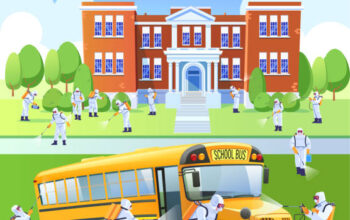With Winter comes a host of unpredictable challenges that make getting around difficult. While the weather can be dreadful at times, we still have to leave the safety of our homes and go to work, among other things.
So just how can we remain safe when navigating through the hazardous conditions that winter brings and contribute to the safety of others? Here are a few winter safety tips to consider.
Safe Winter Walking Tips
Wear proper footwear:
Avoid smooth soles and opt for a heavy-treaded shoe with a flat bottom. Try a pair of cleats for additional traction. There are many inexpensive options.
 Walk attentively:
Walk attentively:
While walking in the rain or on snow or ice on sidewalks or in parking lots, walk consciously. Look up to be aware of anything in your path including ice, uneven surfaces or debris. Occasionally scan your vicinity to ensure you are not in the way of vehicles or any obstacles. Be attentive – put your device away and try to keep your hands free.
Walk slowly:
Do not rush, take your time. Walk slowly, shorten your stride and plant your feet securely on each step. Where available, firmly grip handrails.
Anticipate ice:
Be on the lookout for black ice that may appear as wet pavement.
Enter buildings cautiously:
Building entrances may be wet with melted snow and ice or from shoes that have been drenched in the rain. When you arrive at your destination such as school, work, or a shopping center, be sure to look at the ground as you enter the building.
Safe Winter Driving Tips:
Slow down:
In hazardous conditions, drive under the speed limit, use slow and steady maneuvers, and avoid any sudden stops, starts, or turns. You will have better control of your vehicle.
 Avoid tailgating:
Avoid tailgating:
Increasing the driving distance between you and the vehicle in front of you can help avoid collisions. Should you need to make any sudden maneuvers, the extra distance provides the space to do so.
Beware of black ice:
It’s nearly impossible to see black ice, but you can spot it when your headlights reflect off the road at night. This is why it is important slow down a couple of hundred feet before stop signs and traffic lights.
Avoid standing water:
When driving in wet or rainy conditions, avoid standing water at all costs. It is often difficult to tell just how deep the water is, and standing water greatly increases your risk of hydroplaning. If you cannot avoid driving through standing water, go as slow as possible to reduce your risk of hydroplaning.
Use your headlights:
Rain can obstruct a driver’s line of sight. Using headlights helps you see and helps other drivers, cyclists, and pedestrians see you. Do not use high beams in the rain, as they can scatter light and actually reduce visibility.



